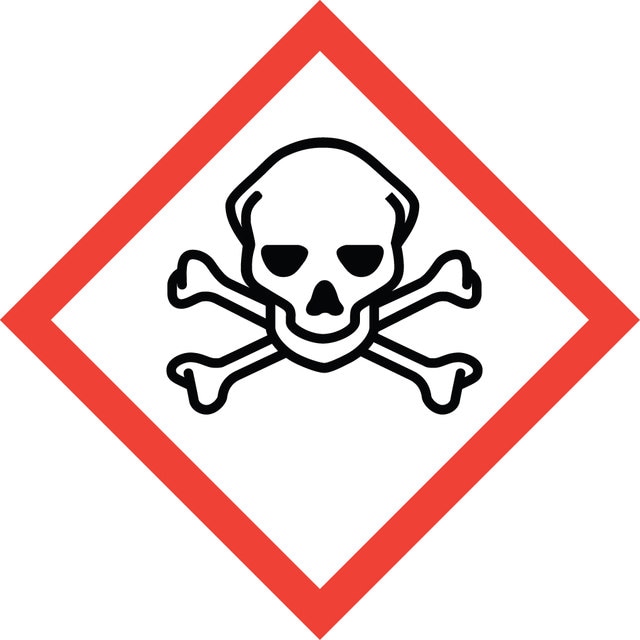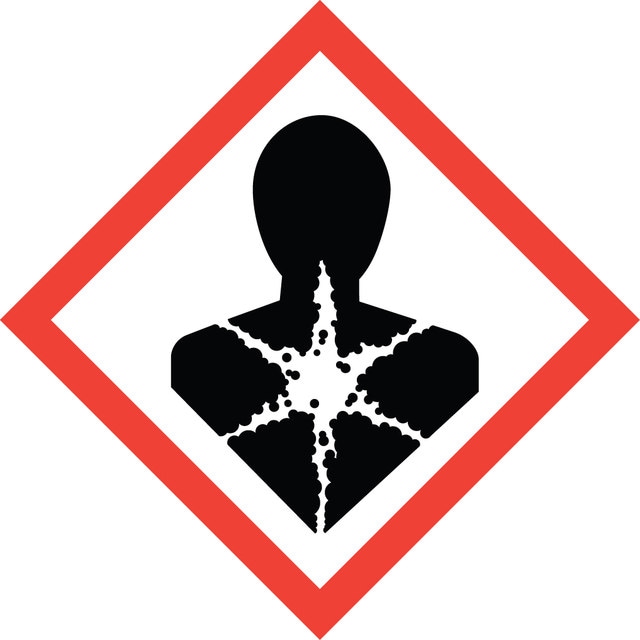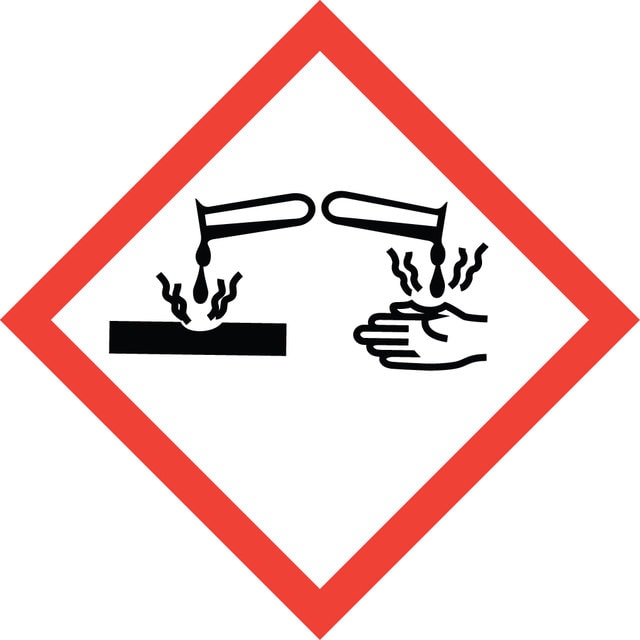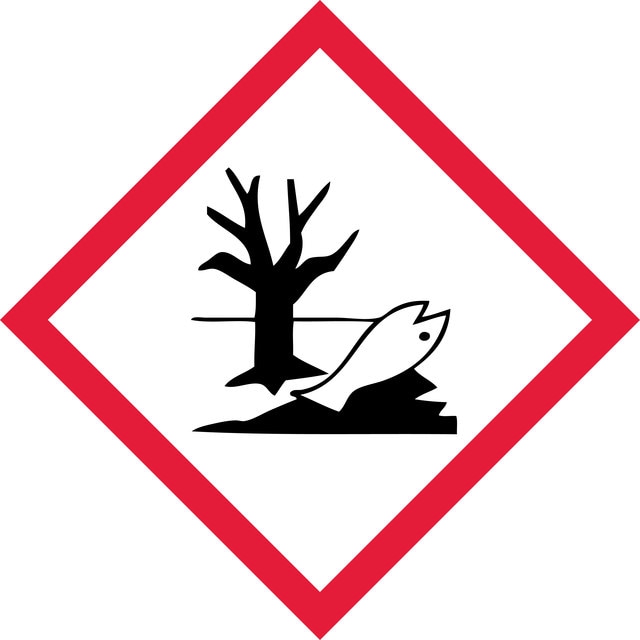2-Mercaptoethanol is compatible with a wide range of common aqueous buffers, such as Laemmli sample buffer, phosphate-buffered saline, or Tris buffer. Certain buffers, such as Tris, can cause oxidation of 2-mercaptoethanol. In these situations, preparation of the solution is recommended just before use.
Seleccione un Tamaño
MXP 576.00
MXP 1,750.00
MXP 2,469.00
MXP 4,411.00
MXP 576.00
Fecha estimada de envío26 de diciembre de 2025Detalles
Acerca de este artículo
Saltar a
Nombre del producto
2- Mercaptoetanol, Molecular Biology, suitable for electrophoresis, suitable for cell culture, BioReagent, 99% (GC/titration)
InChI key
DGVVWUTYPXICAM-UHFFFAOYSA-N
InChI
1S/C2H6OS/c3-1-2-4/h3-4H,1-2H2
SMILES string
OCCS
grade
Molecular Biology
vapor density
2.69 (vs air)
vapor pressure
1 mmHg ( 20 °C)
product line
BioReagent
assay
99% (GC/titration)
form
liquid
expl. lim.
18 %
reaction suitability
reagent type: reductant
concentration
14.3 M (pure liquid)
technique(s)
cell culture | mammalian: suitable
electrophoresis: suitable
refractive index
n20/D 1.500 (lit.)
pH
4.5-6 (20 °C, 500 g/L)
bp
157 °C (lit.)
solubility
H2O: soluble 1 mL/mL
density
1.114 g/mL at 25 °C (lit.)
foreign activity
DNase, RNase, protease, none detected
storage temp.
2-8°C
Quality Level
¿Está buscando productos similares? Visita Guía de comparación de productos
Categorías relacionadas
1 of 4
Este artículo | 63689 | M6250 | 97622 |
|---|---|---|---|
| grade for molecular biology | grade for molecular biology | grade - | grade for HPLC derivatization |
| technique(s) cell culture | mammalian: suitable, electrophoresis: suitable | technique(s) RNA extraction: suitable, protein extraction: suitable | technique(s) - | technique(s) HPLC: suitable |
| assay 99% (GC/titration) | assay ≥99.0% (GC) | assay ≥99.0% | assay ≥99.0% (GC) |
| Quality Level 200 | Quality Level 200 | Quality Level 200 | Quality Level 100 |
| product line BioReagent | product line BioUltra | product line - | product line - |
| storage temp. 2-8°C | storage temp. 2-8°C | storage temp. 2-8°C | storage temp. 2-8°C |
Application
βEl β-mercaptoetanol o 2-mercaptoetanol se ha utilizado:
signalword
Danger
Hazard Classifications
Acute Tox. 2 Dermal - Acute Tox. 3 Inhalation - Acute Tox. 3 Oral - Aquatic Acute 1 - Aquatic Chronic 2 - Eye Dam. 1 - Repr. 2 - Skin Irrit. 2 - Skin Sens. 1A - STOT RE 2 Oral
target_organs
Liver,Heart
Clase de almacenamiento
6.1A - Combustible acute toxic Cat. 1 and 2 / very toxic hazardous materials
wgk
WGK 3
flash_point_f
154.4 °F - closed cup
flash_point_c
68 °C - closed cup
ppe
Faceshields, Gloves, Goggles, type ABEK (EN14387) respirator filter
Elija entre una de las versiones más recientes:
¿Ya tiene este producto?
Encuentre la documentación para los productos que ha comprado recientemente en la Biblioteca de documentos.
Protocolos
Protocolo del ensayo con MTT para medir la viabilidad, la proliferación y la citotoxicidad celulares. Instrucciones para la preparación de los reactivos MTT y ejemplos de aplicaciones.
This page shows and discusses three protocols for stripping and reprobing a western blot membrane.
MTT assay protocol for measuring cell viability, proliferation and cytotoxicity. Instructions for MTT reagent preparation and examples of applications.
Perform colorimetric assays for nonradioactive quantification of cellular proliferation, viability, and cytotoxicity for adherent or suspension cells cultured in 96-well microplates.
-
In which buffer or solvent should 2-Mercaptoethanol be diluted for working solution preparation?
1 answer-
Helpful?
-
-
How can I determine the shelf life / expiration / retest date of this product?
1 answer-
If this product has an expiration or retest date, it will be shown on the Certificate of Analysis (COA, CofA). If there is no retest or expiration date listed on the product's COA, we do not have suitable stability data to determine a shelf life. For these products, the only date on the COA will be the release date; a retest, expiration, or use-by-date will not be displayed.
For all products, we recommend handling per defined conditions as printed in our product literature and website product descriptions. We recommend that products should be routinely inspected by customers to ensure they perform as expected.
For products without retest or expiration dates, our standard warranty of 1 year from the date of shipment is applicable.
For more information, please refer to the Product Dating Information document: https://www.sigmaaldrich.com/deepweb/assets/sigmaaldrich/marketing/global/documents/418/501/product-dating-information-06-25-mk.pdfHelpful?
-
-
How is shipping temperature determined? And how is it related to the product storage temperature?
1 answer-
Products may be shipped at a different temperature than the recommended long-term storage temperature. If the product quality is sensitive to short-term exposure to conditions other than the recommended long-term storage, it will be shipped on wet or dry-ice. If the product quality is NOT affected by short-term exposure to conditions other than the recommended long-term storage, it will be shipped at ambient temperature. As shipping routes are configured for minimum transit times, shipping at ambient temperature helps control shipping costs for our customers. For more information, please refer to the Storage and Transport Conditions document: https://www.sigmaaldrich.com/deepweb/assets/sigmaaldrich/marketing/global/documents/316/622/storage-transport-conditions-mk.pdf
Helpful?
-
-
I’ve purchased 25mL bottle and want to use this in my cell culture media at concentration of 50mM. What is the concentration in the 25mL bottle and how to make this to 50mM concentration?
1 answer-
This product is a neat or pure material. The concentration is considered to be 100%. The calculated molarity is 14.3 M as reported in the Properties section of the product page.
To prepare a 50 mM solution, please mix 0.391 g of M3148 with 100 mL solvent. 0.391 g / 78.13 g/mol / 0.1 L = 0.05 = 50 mM.Helpful?
-
-
Hi, What is the concentration of 2-mercaptoethanol in the 100mL bottle?
1 answer-
This product is a neat or pure material. The concentration is considered to be 100%. The calculated molarity is 14.3 M as reported in the Properties section of the product page.
Helpful?
-
-
Hi is this sterile?
1 answer-
This product is not sterile, but can be used in cell culture applications and is DNase, RNase, and protease free.
Helpful?
-
Active Filters
Nuestro equipo de científicos tiene experiencia en todas las áreas de investigación: Ciencias de la vida, Ciencia de los materiales, Síntesis química, Cromatografía, Analítica y muchas otras.
Póngase en contacto con el Servicio técnico



